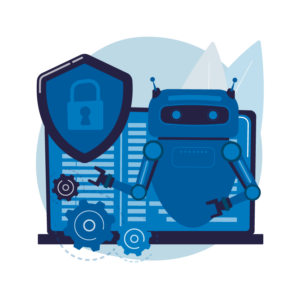
Worms, Trojans, and many other viruses-behind these threats lie attackers with a variety of motivation. The opportunity to profit through the theft of personal information and commercial trade secrets presents little risk to cyber attackers. Today, more than 4 million pieces of malware are detected every 15 days, according to the report 2022 from Sectigo! Attackers seem to be a step ahead. To deal with the growing threats, it is essential that companies equip themselves with efficient tools capable of countering even the most complex cyber-attacks. The solution? Adopt an effective IT security strategy that automates malware detection. Here are some explanations.
Hackers are very good at damaging companies’ computer systems. Malicious software can have irreparable consequences for companies.
Malware includes all software that is designed to harm users. Capable of taking a variety of forms, it can infect desktops and laptops, but also phones, tablets, or any device. Simply put: no device is safe from malware! How does this malware work?
Hacking is often in the news. One of the latest victim (August 2022) is the Southern Ile-de-France hospital centre (CHSF), in Corbeil-Essonnes, which was attacked by ransomware and saw its business software, data storage systems and information system paralysed. To lift the hospital’s paralysis, the hackers demanded a ransom payment of 10 million dollars… A massive cyber-attack that brings back bad memories! In 2019, ransomware had already paralysed more than 120 hospital centres across France, forcing numerous operations to deprogram.
Some attacks can also block the entire local network, or even stop large container ships or cargo planes that are vital to the global economy. This is what happened to the German company Hellmann Worldwide Logistics, which was forced to shut down for several days after a phishing attack.
But beyond these numbers and flashy attacks, malware is often used to steal sensitive information such as bank data, confidential information subject to intellectual property or customer databases. As a result, these attacks can have disastrous consequences for companies. Therefore, it seems essential to measure the danger and equip oneself with efficient tools to fight against cyber-attacks.
For companies, the main challenge is now to anticipate cyber-attacks and to equip themselves with effective tools to fight them efficiently. Regular awareness-raising of employees, reinforced authentication, cyber-insurance to resume activity in the event of ransomware… Despite all these initiatives, the efforts of technicians and analysts often remain fruitless and time-consuming in the face of constantly evolving cyber-attacks. The solution at present? Automation!
To protect your company against malware attacks, several solutions exist, including the use of an antivirus. Analysis of files, software, applications and connected external devices, detection and elimination of malware, spam, and other viruses… Although antivirus software seems to be effective, it has its limits! As malware is constantly evolving, it cannot combat all cyber threats. For companies, it is essential to add other layers of protection such as :
Despite their disadvantages, all these solutions used simultaneously can better protect a company. But employees still need to adopt reflexes to defend themselves against attacks! It is important to remember that one must avoid :
Cyber-attacks are at an all-time high and are disrupting the operations of many businesses worldwide. To protect yourself, there is no magic bullet. The solution is to combine several powerful tools on a scalable platform to increase your ability to prevent attacks. With QFlow, our customizable and scalable file analysis platform, you can get the most out of your IT security investment.